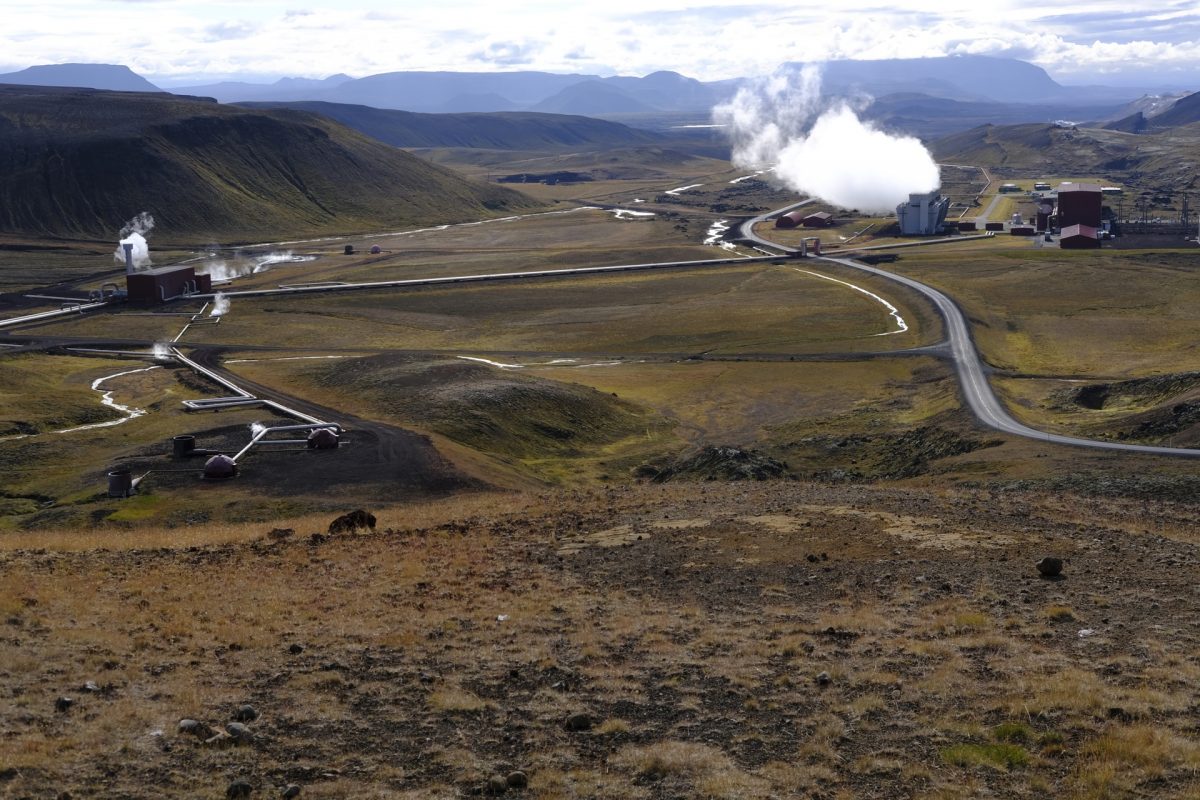Oops, I’m getting a bit behind here. This post is memories of the 5th.
We started off with a walk around the re-forrested peninsula into Myvatn (having since discovered that the name literally means “midge lake” in Icelandic). It was a bit cooler than the previous day, and there was a bit of breeze, so we hoped that would dampen the blighters’ enthusiasm for swarming, and once in the forest, that was mostly the case. Still pretty thick in the carpark though. Nice, quite forest, with occasional fabulous views into the lake itself.
From there we climbed up to the steaming mud pools known as Namafjall Heverir, which I think is Icelandic for “hell”. I now know why they refer to “the bowels of the earth”: that’s how they smell. Nice boiling mud though, with interesting colour casts, and quite a bit of steam.
A bit further up into the hills we came to the Krafla geothermal power station, which we observed from a hill, but did not go into until later.
Next was Leirhnjukur, or clay-hill, which was associated with the Krafla eruption, I think. There were vast fields of all sorts of different lavas, which we walked over. I made it as far as one of the old craters, which still had some steam coming from vents. There were also blue pools of eruption-process water or steam, sitting in vast mounds of mud. Weird place. Must keep the geologists entertained for ages.
We went back to the Krafla geothermal power station for lunch, because we had spotted a picnic table near the visitor centre. The station produces 60MW, which is a chunk of Iceland’s supply (the other 90% is hydro, I believe.) There was quite a bit of information, and in the visitors’ centre we were shown a short video, which was very interesting and well made.
After lunch we drove to the Dettifoss, which is a waterfall, claimed to be the one with the greatest water flow over it, in Iceland. It was certainly a big and impressive falls. To me, even more impressive was the 28k of unsealed road that had to be traversed to get to the (more spectacular, apparently) eastern side, and then returned along. That road went through landscape that could just as well have been on the moon, apart from the breathable atmosphere and blue skies (in parts: mostly cloud.) Uniform grey in all directions, randomly undulating, and strewn with uneven, rough, volcanic rocks and boulders. The falls, the canyon they fell into, the river and most of the surrounding area were also the same uniform, lifeless grey. There was just some green, grassed parts on the western side of the falls, where the spray and mist seemed mostly to fall.





Leave a Reply